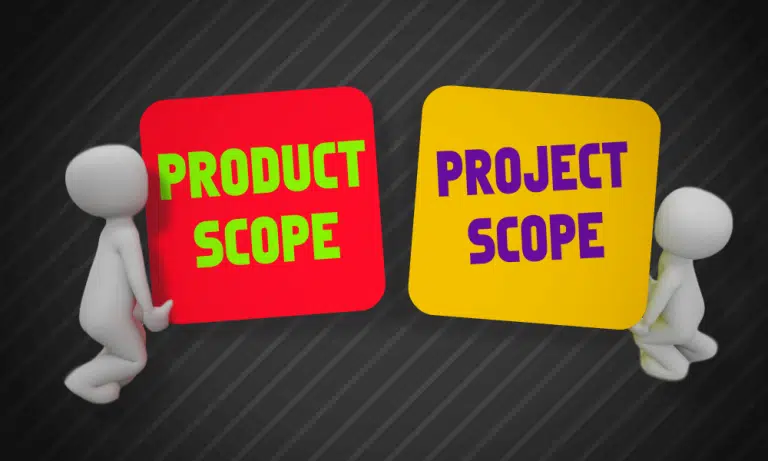Today, we will discuss the three-point estimation technique in project management.
The quantitative evaluation method known as three-point estimating is characterized by applying a mathematical procedure in the estimation process.
Estimating both the budget and the timeline is essential for project managers. Estimating, the creation of timelines, and the interpretation of estimate disparity may all be accomplished more efficiently with the help of the three-point estimation technique.
Three-Point Estimation
The three-point estimate method is a strategy for estimating costs and schedules that helps eliminate biases and uncertainties while calculating activity costs or durations.
Instead of depending on just one estimate for each job, three are computed and then averaged to limit the number of potential risks, biases, and uncertainties. The estimation obtained from using the three-point approach is more accurate than the estimation obtained using similar or parametric methods.
Application of Three-Point Estimating
Two types of three-point estimates are:
- Triangular distribution and
- Beta distribution (PERT).
#1. Triangular Estimation
- This technique predicts cost or duration by applying an average of Optimistic, Pessimistic, and Most Likely estimates. These methods are sometimes described as an independent subcategory of estimation techniques.
- Triangular distribution will be represented by this formula: E = (O+ML+P)/3 where E = Estimate, O = Optimistic, ML = Most Likely, and P = Pessimistic.
- In this technique, each estimate has an equal weight. Thus, the Most Likely estimation does not influence the final assessment more than twice the Less Likely estimates.
Optimism and Pessimism in Estimates
Creating realistic estimates is challenging because optimism and pessimism are inherent in human nature and can lead to bias and imprecise estimates.
Pessimism and optimism are both caused by a wide variety of factors, including experience, personal and corporate interests, expectations of stakeholders, pressure from management, restrictions, ethical concerns, and organizational culture.
#2. The Program Evaluation and Review Technique (PERT)
- The Program Evaluation and Review Technique (PERT) is a sophisticated form of the range-estimation technique. It calculates the cost or duration estimate by applying a weighted average of Optimistic, Pessimistic, and Most Likely estimates.
- PERT weights the Most Likely data by four times its value to reinforce its significance. The PERT formula is E = (O + 4ML + P)/6, which results in a beta distribution formula.
- To reduce estimate inflation, historical data can be used to adjust the predictions.
- A weighted average of the estimate range provides a more valuable forecast than a single Most Likely calculation. Project estimators tend to be overly optimistic, so using the PERT formula can produce a more statistically accurate result.
Examples of Three-Point Estimation
A project manager offers a Most Likely estimate of 100,000 USD for developing a new Graphical User Interface in the software, hypothesizing that, depending upon the materialization of identified project risks, the final cost could be anywhere between 66,000 USD and 210,000 USD.
Using the PERT formula,
where O = 66,000 USD,
P = 210,000 USD,
and ML = 100,000 USD,
The PERT estimate would be = (66,000+4*100,000+210,000)/6
= 113,000 USD
Using Triangular Distribution (explained below), the project will cost between 41,000 USD and 185,000 USD with a 99.7% probability.
Note that the range is high because of the estimated substantial deviation between Optimistic and Pessimistic costs.
Triangular Vs Beta Distribution
To compare estimates for a typical work package, let’s consider:
- Optimistic estimate (O): 15 days
- Most Likely estimate (ML): 24 days
- Pessimistic estimate (P): 30 days
Using triangular distribution, the duration of the work package = (O+ML+P)/3
= (15+24+30)/3
= 23 days.
If using beta distribution, the duration = (O+4*ML+P)/6
= (15+4*24+30)/6
= 23.5 days.
In beta distribution, the estimated effort is greater than in triangular distribution because no element has equal weight, and Most Likely has more weight than others.
Let’s calculate standard deviation between estimates: (P-O)/6 = (30-15)/6 = 2.5 days.
PERT reveals the 3-Sigma standard deviation has a high probability of occurrence with 99.7% probability, whereas 1-Sigma standard deviation will occur with a probability of 68.3% and the 2-Sigma standard deviation with a probability of 95.5%.
To calculate boundaries of estimates based on standard deviation, the formulae used are:
Lower Boundary = Beta Estimate – (# of times of standard deviation)
Upper Boundary = Beta Estimate + (# of times of standard deviation)
For 3-Sigma standard deviation,
Lower Boundary = 23.5 – 3*2.5 = 16
Upper Boundary = 23.5 + 3*2.5 = 31
Sound estimations are usually measured in the range rather than a specific number.
Using PERT Beta Distribution, with 99.7% probability, the project’s duration will be between 16 and 31 days.
This technique is particularly useful, especially if there is a wider range between optimistic and pessimistic estimation values.
If we want to complete the project within 23.5 days, the probability of meeting this completion time is approximately 15.9%.
When estimating how long a task will take, team members may include additional time as a buffer to account for potential complications. The inflated timetable that is the direct consequence wastes both time and money.
By reducing the buffer, it is possible to design a schedule that is realistic and unaffected by bias.
Pros & Cons of 3-Point Estimating Technique
The following are the pros and cons of using the three-point estimating method.
Pros
- Estimate time and cost estimate of activities
- Estimate project cost and duration
- Removes bias from the estimation
- Require fewer resources
Cons
- Subjectivity weakens the accuracy
- It depends on the estimators’ experience
- Not very accurate
Three Point Estimation Vs Analogous Estimation
Analogous estimation is used when the management needs a quick estimation. Because this estimation does not need a defined scope of work and its accuracy ranges from -25 to +75 percent, it is referred to as a rough order of magnitude estimation.
In analogous, you make an educated prediction about the cost of your project by comparing it to other projects that were roughly comparable to it. The accuracy depends on the resemblance between the two projects and their combined size.
The accuracy of estimates produced using equivalent methods is significantly lower than that of estimates obtained using three-point methods.
Three Point Estimation Vs Bottom-Up Estimation
The bottom-up estimation method yields the most reliable results.
Using this method, you will first divide the work associated with the project into activities, then determine how long each activity will take and how much it will cost. Finally, you will add all of these numbers together to get the overall estimate.
This estimation takes more time and money, but the results are more accurate than those obtained from the 3-point estimate. As a result, it is a reliable approximation, although having an accuracy that varies from – 5 percent to + 10 percent.
Conclusion
Accurate estimating is necessary to develop a schedule and cost baseline, yet, many projects do not have access to previous data that could serve as the basis for estimation. Using a three-point estimate allows project managers to predict the estimations in these situations.
Because estimates are only approximations, selecting the methodology most appropriate for the given set of conditions is important. If you need a reasonably accurate result within a manageable period, using a three-point estimate can be helpful.
Please note that if you are preparing for the PMP certification exam, this is an important topic, and you may see a few questions in the exam from this three-point estimation technique.
How are you using three-point estimation in your project? Please share your experience with this cost-estimating technique.

I am Mohammad Fahad Usmani, B.E. PMP, PMI-RMP. I have been blogging on project management topics since 2011. To date, thousands of professionals have passed the PMP exam using my resources.







